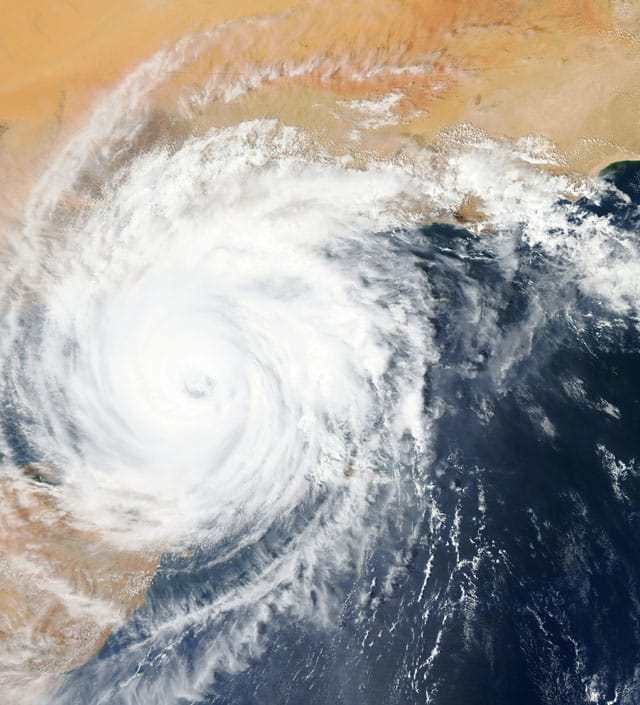
Insurance companies have been hit with record payouts due to a significant increase in major loss events such as tornados, flooding and wildfires. That has resulted in skyrocketing property and casualty (P&C) rates in high-risk areas — if coverage is available at all. Rising P&C rates aren’t likely to subside anytime soon.
This shift impacts everyone residing in vulnerable areas, but those who own valuable properties are especially susceptible to increasing premiums or loss of coverage altogether. Examples include affluent neighborhoods sought by high and ultra-high-net-worth clients: beachfronts prone to flooding and hurricanes such as Miami, or secluded communities with dry brush prone to wildfires such as Malibu, California. So, what does this mean for fiduciary high-net-worth (HNW) wealth planners?
While many of us do not sell or write insurance, we can determine if properties, artwork and other valuables are adequately covered as part of risk mitigation and asset protection. As an extension of this role, we can help clients navigate the evolving P&C terrain as they try to buy new policies or renew existing ones. It means we have an opportunity to become a stronger presence in our clients’ financial lives.
Preparing Clients for a New P&C Norm
In 2021, global losses topped $100 billion for the fourth time since 1970, according to Swiss Re. This is due to a significant increase in the frequency and severity of catastrophic and major loss events. The average number of catastrophic events per year increased from 7.4 over the 42-year period from 1980 to 2021, to 17.2 during the most recent five-year period (2017 to 2021), according to the National Oceanic and Atmospheric Administration (NOAA).
Insurers pass those costs onto policyholders across the board through higher rates, affecting even those who have not submitted a claim. But the spike in major and catastrophic loss events has hit high-risk policies especially hard.
Insurance companies have reduced their exposure by no longer offering coverage in areas prone to loss and those with higher loss histories. They are more likely to decline new policy applications and charge more for those they do accept. Based on discussions with a number of brokers, a policy written five years ago could cost two to 17 times more to write today.
Pandemic-related inflation, rising labor costs and supply shortages are also driving up replacement costs of homes, impacting the accessibility of guaranteed and extended replacement cost policies. Such policies, which incorporate projected inflation rates into premiums, cover increased rebuilding and repairing costs over the original coverage amount. Inflation protected policies have become increasingly harder to find and more costly.
These changes are likely to impact older clients, particularly if they’re considering buying property for retirement. Older homeowners could also find themselves with very valuable, uninsurable property just as they begin to withdraw form their portfolio to fund their lifestyle. If older clients rely on investment assets to self-insure or opt to go without coverage – and then see their home destroyed in a natural disaster – the outcome could be devastating.
“Older homeowners could also find themselves with very valuable, uninsurable property just as they begin to withdraw form their portfolio to fund their lifestyle.”
Learning the Policy Structure
For planners, it helps to understand the P&C provider hierarchy. Standard insurers, such as State Farm and Allstate, generally service the mass market. Clients requiring additional protection, typically above $1 million, usually seek private client insurance. This is offered by AIG, Chubb and others.
With this “white glove” coverage, policyowners generally have a designated agent who has direct access to the underwriter and are more likely to negotiate flexibility with respect to underwriter guidelines. Another benefit is that ‘gray area’ claims are more likely to favor the policyholder.
For very large risks, however, private-client insurers may only underwrite a portion of a policy or none at all. Homeowners in high-risk areas with high property values, typically above $10 million, who can’t get private client coverage, must seek surplus lines. Surplus lines, generally customized products written by firms such as Lloyd’s, are often divvied up among multiple carriers to spread the risk.
Expanding Your Advisory Role
Prevent Coverage Lapses
Changes in the P&C insurance market present an opening to expand our role as advisors. For instance, we can set up autopayments and track policy renewal dates as part of our regular monitoring of wealth plans to avoid lapses in coverage and prepare for policy changes.
Homeowners whose policies are expiring need to know what their options are. Clients may be unaware that the cost of their replacement coverage is slated to increase significantly or that the carrier no longer offers coverage in their state.
It’s particularly important for homeowners with loans against their property to avoid coverage lapses since loan agreements typically require them to have insurance. To avoid violating the loan terms, planners should determine the policy renewal status at least three months prior to expiration. This should allow enough time to find another solution if the current carrier no longer provides coverage in the area or if the premium is too high.
A history of late payments can also increase insurance costs. A client whose policy was cancelled due to nonpayment may face higher insurance costs and downgraded terms with new coverage. Helping client arrange autopayments reduces the likelihood of late payments.
Explore Coverage Options
If the homeowner requires a new policy, there are several options to explore. It helps to build a network of creative brokers who can be asked to assist clients struggling to renew policies or secure new ones. Some believe there is a “home for every risk” and will work to find unconventional solutions. For example, one of those solutions could be securing surplus lines from eight carriers to insure a $40 million home.
If guaranteed or extended replacement cost coverage is unavailable, clients who’d like to ensure they can rebuild after a loss could attempt to insure their home for 10% to 50% more than their replacement cost to compensate for inflation. That policy may be pricey but paying $200,000 a year to insure a $15 million home would still be less painful than having no insurance — and no home — after a natural disaster.
Clients should be mindful that reporting multiple small property claims over a short period of time could also increase their insurance costs and negatively impact their future coverage terms. It’s recommended the owner pay small damages out of pocket.
Suggest Risk-Reduction Measures
Many insurance companies offer discounts for changes that reduce homeowner risk such as removing brush and fire hazards. Brokers can also recommend coverage for sump pump failures or other equipment breakdowns.
We can suggest that clients consider gradations on the risk spectrum. Insurance costs have become hyper-localized. For example, in a town prone to wildfires, homes farthest from the brush that are also buffered by other homes will have the lowest premiums. Homes closest to the brush may be uninsurable. Premiums rise in between, ranging from homes farthest away with the biggest buffer to those closest to the brush.
Additional Reading: Multimillion Real Estate Portfolio Presents Income Inheritance Dilemma
If clients are interested in purchasing a home in a high-risk area, they may find that insurability plays a factor in market value. The client should work with a real-estate broker who understands the nuisances of local insurance coverage.
If all else fails, we can always recommend what clients likely don’t want to hear — that it may simply be easier to avoid living in a high-risk area.
Become a Trusted, Enduring Presence
Clients may not think of us as insurance experts, but we can prepare them for rising costs and the decreasing availability of P&C policies. We can facilitate the process by vetting brokers and solutions. We can analyze new policies and coverage changes as part of a client’s larger wealth plan to determine if they are adequately covered. Over time, we can add to their financial security and become a trusted, enduring presence in their lives.
Mallon FitzPatrick, CFP, is a Principal, Managing Director, and Head of Wealth Planning at Robertson Stephens, a wealth management firm providing innovative and comprehensive wealth planning and investment solutions through an intelligent digital platform.







